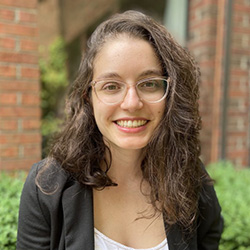Special Physics and Astronomy Colloquium: Maya Fishbach: Astrophysics and cosmology with gravitational-wave catalogs

When:
Wednesday, February 23, 2022
4:00 PM - 5:00 PM CT
Where: Online
Audience: Faculty/Staff - Student - Post Docs/Docs - Graduate Students
Contact:
Samantha Westlake
samantha.westlake@northwestern.edu
Group: Physics and Astronomy: Astronomy Seminars
Category: Academic
Description:
Abstract: LIGO and Virgo have observed over 80 gravitational-wave sources to date, including mergers between black holes, neutron stars, and mixed neutron star- black holes. The origin of these merging neutron stars and black holes -- the most extreme objects in our Universe -- remains a mystery, with implications for stars, galaxies and cosmology. I will review the latest LIGO-Virgo discoveries, focusing on properties of the binary black hole population. I will discuss some features in the black hole population, including mass gaps and the evolution of the merger rate with cosmic time, and explain how these properties encode the uncertain histories of black hole progenitors. I will conclude with a discussion of gravitational waves as cosmological probes, focusing on measuring the Hubble expansion with gravitational-wave catalogs. While the latest gravitational-wave observations have answered a number of longstanding questions, they have also unlocked new puzzles. I will conclude by discussing what we can expect to learn from future gravitational-wave and multi-messenger discoveries.
Speaker: Maya Fishbach, NASA Einstein Fellow, Northwestern University
Please contact Darvell Jones (darvell.jones@northwestern.edu) for the Zoom link.